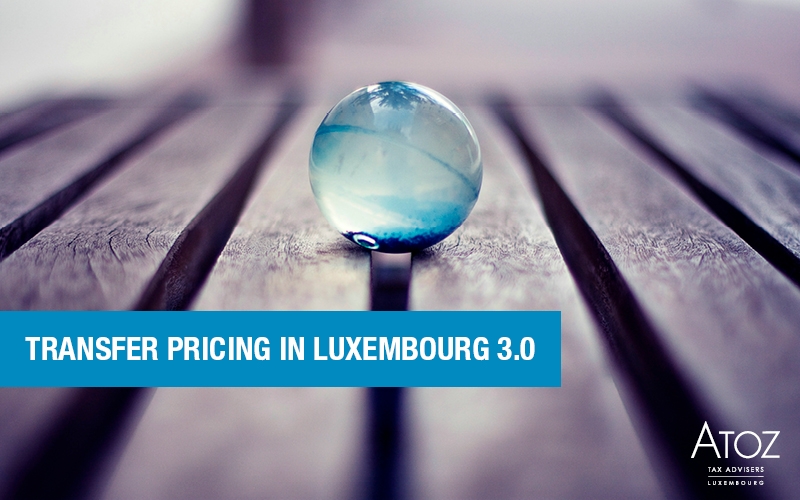Transfer pricing in Luxembourg 3.0 – The emerging relevance of tax audits and recent Luxembourg case law
Over the last few years, transfer pricing and related documentation has become the hot topic in Luxembourg taxation in an evolving environment that is relying increasingly less on tax rulings (including advance pricing agreements). In the past, taxpayers have viewed tax rulings as a way to provide legal certainty and to mitigate tax risks relating to investments and intra-group transactions. However, for a number of reasons this is no longer the case.
More tax audits on the horizon
In the past, tax audits have not been a common phenomenon in Luxembourg. However, tax audits are now performed more systematically by the Luxembourg tax authorities since the creation of a new tax audit division.
In 2010, the Luxembourg legislator introduced a new paragraph 100a to the General Tax Code (Abgabenordnung) that allows the Luxembourg tax authorities to issue preliminary tax assessments on the basis of the statements made in the tax returns. This change was meant to speed up the tax assessment process. When a preliminary tax assessment is issued, the Luxembourg tax authorities have the possibility to review the tax returns within the following five years. Thus, the Luxembourg tax authorities generally have the possibility to review up to five open tax years.
Since the introduction of this provision, final assessments are rather the exception despite taxpayers may always ask for a final assessment in specific cases. This means that potential tax risks may span over several years which requires an appropriate and active tax risk management function.
Experience shows that transfer pricing is always in the focus of tax audits and the tax authorities can more easily challenge transfer pricing when no transfer pricing documentation is prepared. After all, how could taxpayers take informed decisions if no transfer pricing analysis has been performed before the pricing of intra-group transactions has been determined? Therefore, transfer pricing should always be considered before agreements are concluded.
Decision of the Tribunal Administratif
Transfer pricing was also at the heart of a decision of the Tribunal Administratif (Case n° 40348, decision of 22 October 2018) that had to decide in a case where a Luxembourg company (“LuxCo”) received a shareholder loan bearing interest at a rate of 12% to finance real properties situated in France.
The Luxembourg tax authorities challenged the arm’s length nature of the interest rate and considered rates of respectively 3.57% and 2.52% being appropriate for the fiscal years 2011 and 2012.
It is interesting to note that LuxCo prepared two transfer pricing reports. While the first one has been produced in the course of the tax audit, the second transfer pricing report was prepared at a later stage and filed with the claim lodged with the Tribunal. The first transfer pricing report benchmarked an arm’s length range spanning from 3.21% to 7.88%, whereas the second transfer pricing analysis determined an arm’s length range spanning from 9.95% to 19.61%.
The admission of the first report was not disputed even though it has been prepared after the request of the Luxembourg tax authorities. However, the admission of the second transfer pricing report was put into question by the Luxembourg tax authorities. The Tribunal did only consider the first report despite the second transfer pricing analysis was formally admitted to the trial.
In its decision, the court followed the view of the Luxembourg tax authorities that the 12% interest rate was not sufficiently substantiated and considered that the interest rate did not adhere to the arm’s length principle.
Without having more information on the two transfer pricing reports, the significant difference in the arm’s length ranges suggests that at least one of the reports was relying on inappropriate assumptions and comparables. The decision confirms the relevance of transfer pricing documentation and the need or preparing a transfer pricing analysis at the time taxpayers enter into intra-group transactions. While it is possible to produce transfer pricing documentation upon request of the Luxembourg tax authorities, taxpayers are generally in a better position if they take a pro-active stance on determining and documenting transfer prices.
The Importance of Transfer Pricing Documentation
As a matter of principle, the arm’s length character of intra-group transactions should be substantiated in sound transfer pricing documentation. Despite the fact that Luxembourg tax law does not specifically require the preparation of transfer pricing documentation, taxpayers are under a duty to co-operate with the Luxembourg tax authorities and have to evidence facts and provide information in regard to statements made in the tax returns.
When the Luxembourg tax authorities can reasonably evidence that the transfer pricing of an intra-group transaction does not adhere to the arm’s length principle, it is the responsibility of the taxpayer to disprove this rebuttable presumption.
Another factor to be considered is that transfer prices may be reviewed several years after a transaction takes place. This makes it increasingly more difficult from a practical perspective to trace back relevant facts and circumstances of the transaction as well as data on comparable transactions. This evidently exerts pressure on Luxembourg companies to develop and apply appropriate transfer pricing policies for risk mitigation purposes.
Best Practice Recommendations
Transfer pricing inevitably compels taxpayers to find a balance between a comfortable level of security and the costs for the preparation of sound transfer pricing documentation. In practice, Luxembourg companies should screen major intra-group transactions in order to identify specific issues that could raise suspicion on the part of the tax authorities and assess the magnitude of related tax risks.
The effort and resources used to determine and document arm’s length conditions should be proportionate to the significance of the intra-group transaction. Hence, there is no “once size fits all” approach. Instead, a reasonable approach might be to produce full-fledged transfer pricing documentation for all significant intra-group transactions, whereas for less significant transactions a light documentation may be appropriate that focuses on the economic analysis. For insignificant transactions that entail limited tax risks, taxpayers may adopt a reasonable approach without producing any transfer pricing documentation.
It is also important that transfer pricing policies are not disregarded after their implementation. As a matter of best practice, taxpayers should review their transfer pricing documentation at least once a year in order to assess whether the fact pattern is still consistent with reality and to determine whether an update might be necessary. Although taxpayers may reasonably rely up to 5 years on transfer pricing documentation assuming that the circumstances of the controlled transaction did not change, the more the situation changes, the less taxpayers can reasonably rely on the documentation.
Ultimately, transfer pricing documentation has become a key element in tax risk management. Its role will only increase in the years to come. Taxpayers should not consider the preparation of transfer pricing documentation as a compliance exercise. Instead, in the current international tax environment of heightened transparency and scrutiny, Luxembourg companies would be wise to take it one step further and to integrate the documentation of transfer prices in their wider tax strategy, using it as a means to reflect the business rationale behind their investment structure and intra-group transactions.
Posted on 11/04/2019

